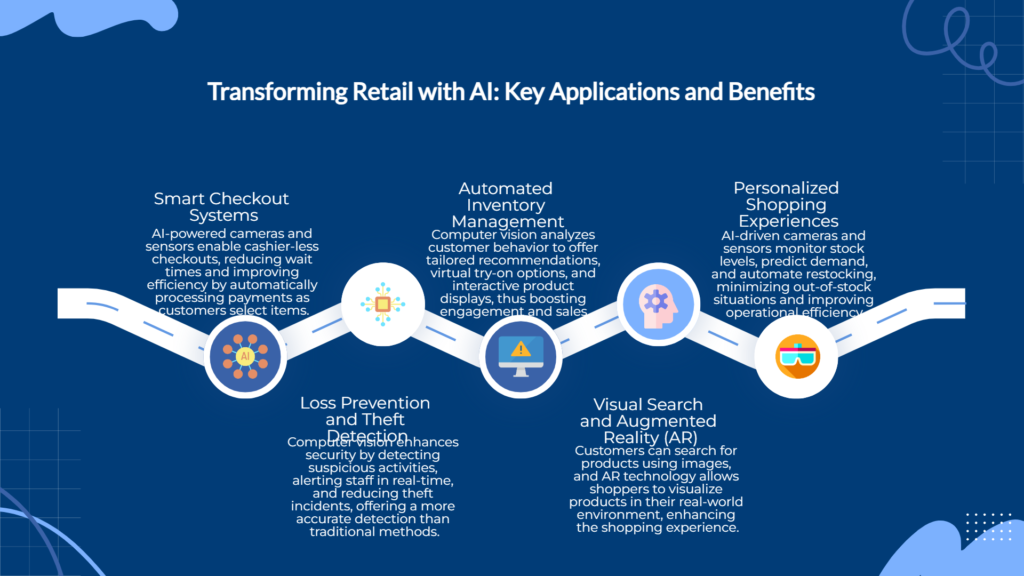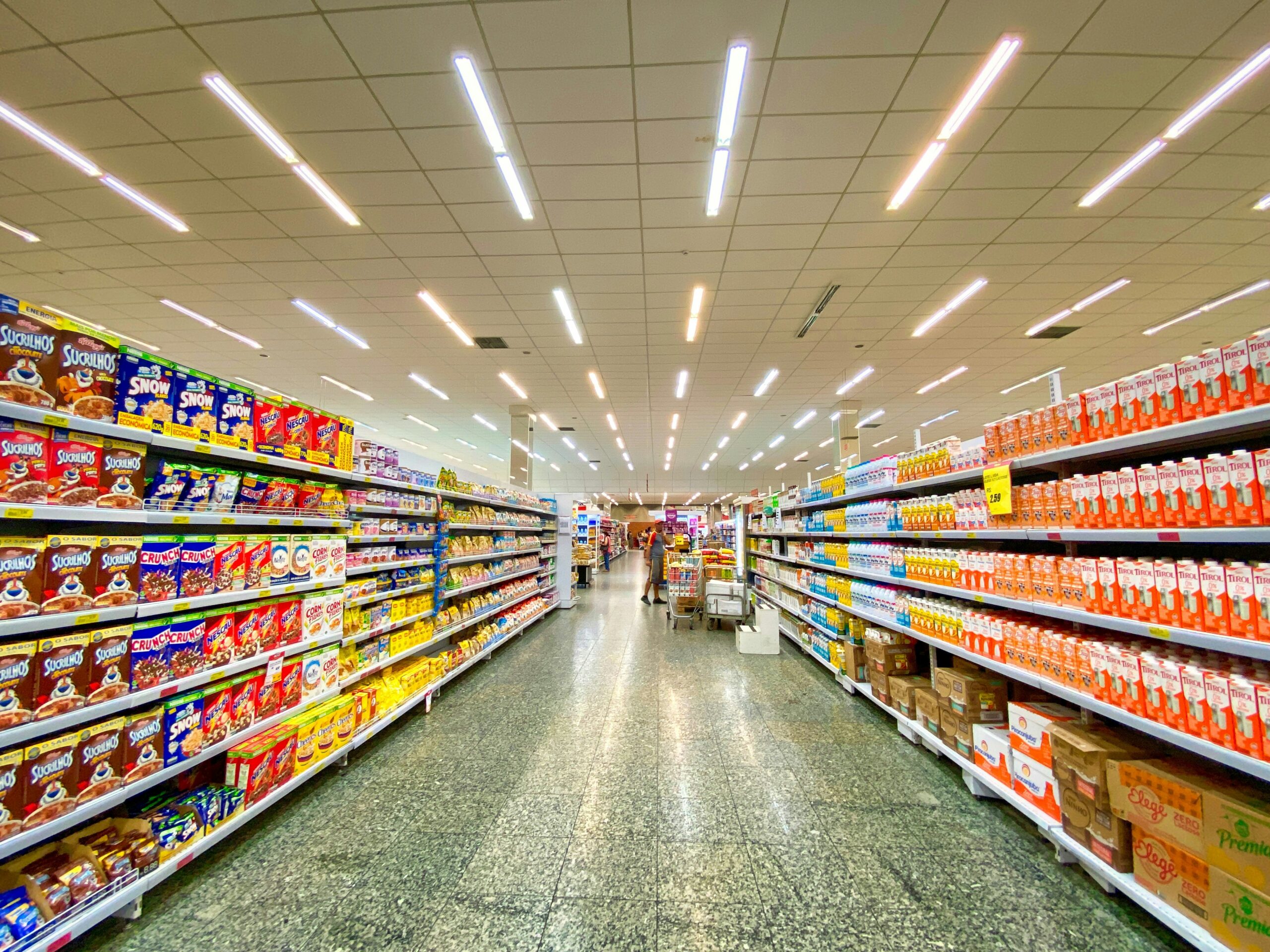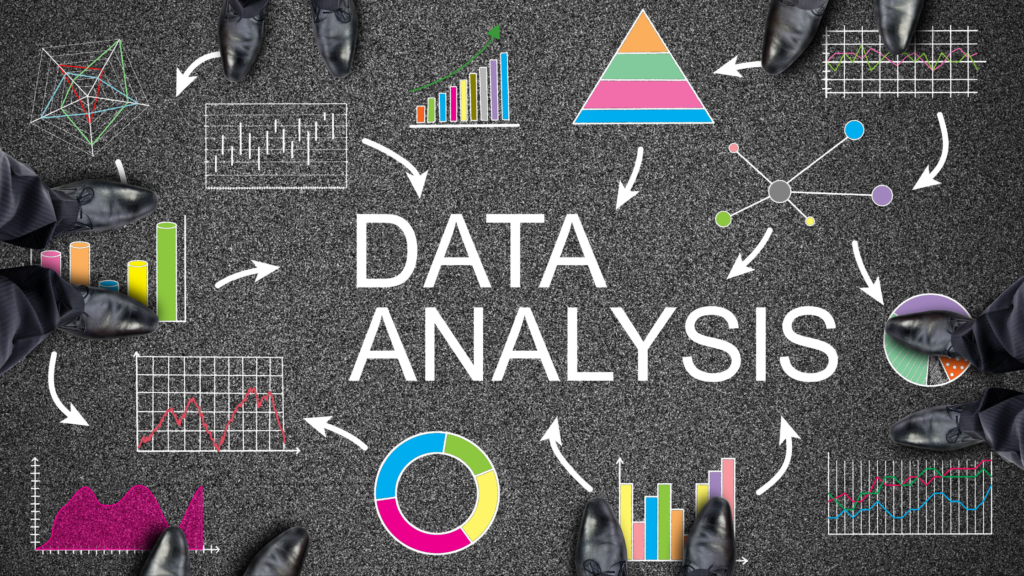Table of Contents
Enhancing Shopping Experiences and Efficiency
Computer vision is significantly transforming the retail industry by introducing automation in various operations, enhancing the overall shopping experience for customers, and streamlining supply chain management processes. This innovative technology uses advanced algorithms and image recognition to analyze visual data, enabling retailers to make informed decisions that improve efficiency and boost sales.
As the global market for computer vision is projected to surge to an impressive $46.96 billion by 2030, with a robust compound annual growth rate (CAGR) of 9.92% from 2025 to 2030, its impact on the retail sector is becoming increasingly clear. Retailers are leveraging these advancements not only to optimize inventory levels and reduce costs but also to create personalized experiences that resonate with consumers, ultimately reshaping the landscape of modern retail.
Key Applications of Computer Vision in Retail
Computer vision is transforming retail operations by making shopping smarter, faster, and more personalized. From cashier-less checkouts to AI-powered inventory tracking, these innovations enhance efficiency and customer experience. Let’s explore the key applications shaping the future of retail.
- Smart Checkout Systems: AI-powered cameras and sensors enable cashier-less checkouts, tracking products as customers select them and automatically processing payments. This reduces wait times, improves efficiency, and enhances the overall shopping experience.
- Personalized Shopping Experiences: Retailers use computer vision to analyze customer behavior, offering tailored recommendations, virtual try-on options, and interactive product displays. This level of personalization boosts engagement and increases sales.
- Automated Inventory Management: By leveraging AI-driven cameras and sensors, stores can monitor stock levels in real time, predict demand trends, and automate restocking. This minimizes out-of-stock situations and improves operational efficiency.
- Loss Prevention and Theft Detection: Computer vision enhances security by detecting suspicious activities, alerting staff in real-time, and reducing theft incidents. AI-powered surveillance systems help identify fraud and shoplifting behaviors more accurately than traditional security measures.
- Visual Search and Augmented Reality (AR): Customers can search for products using images instead of text-based queries. AR technology further enhances the experience by allowing shoppers to visualize products in their real-world environment, such as trying on clothes or placing furniture in a room before purchasing.
- Planogram Compliance and Shelf Monitoring: AI ensures that products are placed correctly on shelves according to store layout guidelines. Computer vision can track stock levels, notify staff when items need restocking, and ensure pricing accuracy with digital tags.
- Customer Behavior Analysis: By tracking customer movement within a store, computer vision identifies high-traffic areas and popular products, allowing retailers to optimize store layouts and improve product placement strategies.
- Dynamic Pricing and Smart Signage: AI-driven digital price tags adjust prices based on factors such as demand, competition, and time of day. Smart signage can display targeted promotions according to customer demographics and behavior.
- Warehouse and Supply Chain Automation: Computer vision optimizes warehouse management by automating order fulfillment, improving quality control, and streamlining logistics. AI-driven robots assist in sorting, packing, and inventory tracking.
- AI-Powered Customer Assistance: Retailers are integrating AI-powered kiosks and robots to provide product recommendations, answer customer queries, and enhance in-store navigation.

Challenges in Implementing Computer Vision in Retail
While computer vision brings numerous benefits to retail, its implementation comes with several challenges. Factors such as data quality, system integration, and privacy concerns can hinder adoption. Understanding these hurdles is essential for retailers looking to leverage AI-driven solutions effectively. Despite its benefits, computer vision in retail comes with challenges:
- Data Quality and Variability: Computer vision models require high-quality, consistent data. Variations in lighting, image angles, and obstructions can affect recognition accuracy.
- Integration with Legacy Systems: Many retailers operate on older IT infrastructures, making it difficult to integrate AI-powered computer vision solutions.
- Real-Time Processing Limitations: Processing vast amounts of image data in real-time requires significant computational power and efficient algorithms.
- Privacy and Compliance Concerns: AI-driven surveillance and customer tracking raise data privacy concerns. Retailers must ensure compliance with GDPR, CCPA, and other data protection regulations.
- False Positives and Accuracy Issues: Computer vision systems can sometimes misidentify products, customers, or behaviors, leading to errors in automation and security alerts.
Emerging Trends in Computer Vision for Retail
As technology advances, computer vision is evolving to offer even more innovative solutions for retailers. Emerging trends like AI-powered staff assistance, edge computing, and smart shelves are transforming the shopping experience. These developments are making retail operations more seamless, personalized, and efficient.
- Integration with Voice and Gesture Recognition: Combining computer vision with voice and gesture commands enables hands-free, interactive shopping experiences.
- AI-Powered Staff Assistance: Retail employees benefit from AI-driven tools that assist in inventory checks, customer inquiries, and sales analytics.
- Increased Use of Edge Computing: Processing data closer to the source (e.g., in-store AI processors) enhances real-time decision-making and reduces reliance on cloud computing.
- Smart Shelves and Smart Displays: Automated shelves monitor stock levels and adjust pricing dynamically, ensuring optimal inventory management.
- Seamless Omnichannel Integration: Retailers are bridging the gap between physical and digital shopping experiences, offering a unified shopping journey across multiple platforms.
Real-World Examples of Computer Vision in Retail
- Amazon Go: Amazon’s “Just Walk Out” technology uses computer vision, deep learning, and sensor fusion to create a seamless, cashier-less shopping experience.
- Walmart: Walmart employs shelf-scanning robots and AI-powered surveillance to monitor inventory levels and prevent theft.
- Sephora: Sephora’s “Virtual Artist” tool allows customers to try on makeup virtually, enhancing the shopping experience.
- H&M: H&M utilizes AI-driven analysis to provide personalized shopping recommendations and virtual try-on mirrors.
Conclusion
Computer vision is transforming the retail industry by enhancing customer experiences, automating inventory management, and improving security. Although challenges like data privacy and the need for real-time processing remain, continuous advancements in AI and machine learning are fostering innovation. As the adoption of computer vision grows, retailers that effectively utilize this technology will gain a competitive advantage in the evolving marketplace.
#ComputerVision #RetailAI #SmartShopping #AIinRetail #FutureofRetail #RetailAutomation #CustomerExperience #AIpowered #RetailInnovation
Join our the community and share your thoughts




Thanks a lot for sharing this with all of us you really know what you’re talking about! Bookmarked. Kindly also visit my website =). We could have a link exchange contract between us!
Some times its a pain in the ass to read what people wrote but this website is rattling user friendly! .
Good – I should definitely pronounce, impressed with your web site. I had no trouble navigating through all the tabs and related information ended up being truly easy to do to access. I recently found what I hoped for before you know it at all. Quite unusual. Is likely to appreciate it for those who add forums or anything, web site theme . a tones way for your client to communicate. Excellent task..
I have learn several good stuff here. Certainly worth bookmarking for revisiting. I wonder how so much effort you put to create one of these wonderful informative site.